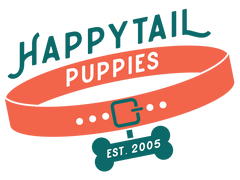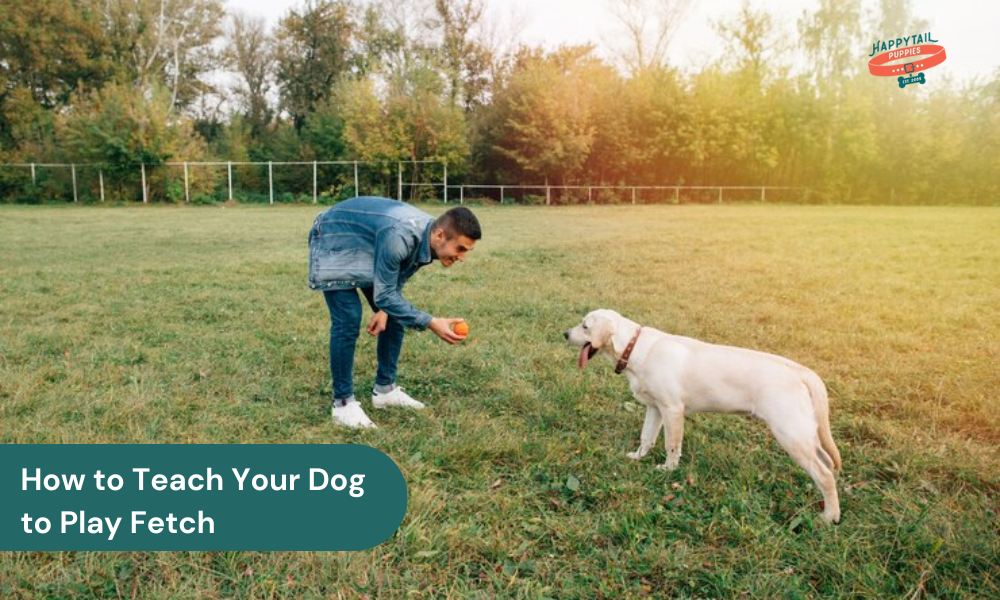How to Teach Your Dog to Play Fetch
Did you ever dream of having a furry friend who eagerly brings back the ball just like in the movies? Fetch is a classic game that strengthens your bond with your dog while providing essential exercise. Training your dog to fetch isn't always easy, but with this step-by-step guide, you’ll learn how to make the game engaging and enjoyable for both of you. Whether you're starting fresh or looking to refine your pup’s skills, we've got tips to make fetch a fun and rewarding experience!
Did you ever wish to have a furry companion who would bring back the ball that you threw, similar to the ones you find in the cute dog movies? Fetch is often considered the classic game that dogs love playing as it forms the best way to bond with pets while offering them the much-required exercises. To know how to teach your dog to fetch is not an easy job to undertake as a pet owner. It is the reason why we have created this stepwise guide to help you know how to teach your dog to fetch. We have something for all dog lovers, whether you plan to start this game from scratch or are in search of a couple of tips to make the game more fun-filled.
Understanding the Basics of Fetch
Fetch is the classiest game in which your pup retrieves an object such as a frisbee, ball, or toy and then returns it to you. Small dog breeds such as Teacup Pomeranian or Bichon Frise may find it more time-consuming to learn due to their overall energy levels or temperaments. However, with positive reinforcements and better consistency, the dogs will learn rapidly. Knowing the key basics will help make the training process more enjoyable and successful.
Teaching your dog to play fetch relies on the basic instincts of your pups to chase and retrieve. It is a game and not a command or a task to make your dog appear more excited and engaged in the activity. The game helps promote exercises, offering both mental and physical stimulation, which is effective for small dog breeds with higher levels of energy, like the Boston Terrier or the Miniature Schnauzer.
The Steps to Teaching Your Dog To Play Fetch
The game of fetch is a behavior that a few dogs will know, as numerous influencing factors often make or break the interest of your dog in this game.
Step 1: Choose the Right Toy
Opting for the right type of toy is the first and most essential step in teaching a puppy to fetch. The toy should be something that your dog finds alluring and easier to carry in its mouth. Teacup Breeds, such as Pomeranians or Yorkies, often struggle with heavier or bigger toys, as it is often best to initiate with something of the right size.
Softballs or toys are often lightweight and easier for your dog to grasp. Dogs often choose softer plush balls or squeaky toys because the sound captivates their attention. You can check out the varied forms of toys to find the ones that excite your pup the most. It is important that your dog remains motivated with interactive toys and gets the urge to chase after them.
Refrain from using the bigger toys that often discourage your pups from carrying or fetching. The toys might be smaller which is easily lost or tough for your dog to locate. The ideal toy is the one that helps your dog chase or engage along with the ones that fit into their mouth comfortably.
Step 2: Capture Their Attention
The other step into knowing how to train a dog to play fetch is by getting their attention and building a sense of excitement revolving around the toy. You should make use of an enthusiastic voice and make your toy appear more alluring by making it move or shake it. Toy breeds like the Teacup Havanese, who are often more laid back, often benefit from this additional effort that would make this game more engaging. You have to initiate by holding the toy right in front of their faces and making them sniff it.
Allow them to check out the toy for a moment and quickly entice them into engaging them by moving it around. A few of the dogs often respond appropriately to the rapid movements, although others may require a subtle approach. Ensure to use a high-pitched voice as well as positive words such as Look at this! or Get It! to build more anticipation. Your objective here is to make your toy irresistible, sparking a natural curiosity.
After your pup shows interest in the toy, try tossing it for the shortest distance. Never worry if they don't immediately chase after it. The aim is to reveal to them that the toy is something more interesting and fun-filled. For breeds like the Bichon Frise, excitement often takes a bit longer to build, so it is important to remain patient and keep the energy up.

Step 3: Introduce the Fetch Command
It is important to teach your dog the verbal cues and what it should do in the game. Use simpler terms such as "get it," "fetch," or "bring it." Dogs such as the Morkie or Shih Tzu often respond appropriately to consistent verbal cues, as they are extremely trainable and eager to please their owners.
When you are throwing the toy, say the fetch command enthusiastically to grab your dog's attention. However, if your dog does not immediately chase after the toy, say the command in an encouraging and friendly tone. You need to start associating these commands with chasing while retrieving the toy.
In breeds like the Chihuahua, repetition is a major aspect. The dogs start learning through repetition, as they have to hear the command consistently while watching you throw the toy. It often takes numerous attempts for your furry companion to know what to expect, so it is not recommended to get discouraged.
Step 4: Encourage the Retrieval
To learn how to train your dog to fetch a ball, teach your dog to chase, followed by the challenge of picking it up. Small dogs like Maltese might be less prone to picking up the toy on their own. This portion of the training involves positive reinforcement and patience.
To start the retrieval process, ensure that you use a friendly and calm voice to drive your dog to pick up the toy. After they get a grab for the toy, be sure to praise them immediately if they are not picking it up on their own. Guide them calmly to the toy while encouraging them with a treat. It is important to praise them as soon as they show any interest in the toy while picking it up as it would aid them in building a connection between the action as well as the reward.
If your dog appears unsure about retrieving the toy, try using another toy that it is comfortable with. You can make the toy more appealing by waving it around or making some sound with it, as most teacup breeds love movement and sounds.
Step 5: Teach Them to Drop the Toy
After your dog learns to bring the toy to them the other step is involved with teaching them to release it on the command. Make use of the words like "drop it" or "give" when your dog holds the toy. Toy breeds, such as Cocker Spaniels, love to play with toys; however, they might become reluctant to drop them.
Initiate by offering your dog a treat or another toy when it has a toy in its mouth. Hold the treat near its nose and encourage it to release the toy in return for a reward. Praise it as soon as it drops the toy. Consistency is the key here, as it helps reinforce a connection between the action and the command.
Try repeating the process until your dog knows that releasing the toy leads to better outcomes. Over time, you can phase out the treats that rely more on praise while your dog learns to release the toys quickly whenever asked.
Step 6: Repeat the Process
Repetition is the key to success in the entire dog training procedure, especially when teaching your pup the game of fetch. Start with short distances to avoid stressing your dog. Dogs like Pomeranians or Poodles may often get tired or start to lose interest rapidly if the game becomes more complex.
Continue throwing the toy a couple of feet away at a time while encouraging your pup to fetch it and then return it. Each time your pup returns the toy to you, try using verbal cues to encourage it to drop while offering praise or a treat. Keep the game sessions short, around 5 to 10 minutes, to ensure that your dog does not get irritated or bored.
While your dog becomes more comfortable with the game, you can eventually increase the distances at which you throw the toy. Some dog breeds thrive with lengthier fetch sessions, while others might love shorter ones and frequent games.
Step 7: Add a Challenge
While your dog becomes more proficient in fetching and returning the toy, it is time to add complexity to keep things interesting. Dogs like Miniature Schnauzers or Dachshunds might enjoy the additional mental stimulation that comes with dealing with the obstacles in the game of fetch.
You can create an easier obstacle course using household items or furniture. Start with the smaller challenges, such as making your dogs run around the chair or jump over the lower objects, before eventually increasing the level of challenge. Adding variety will help keep your dogs more engaged and help them focus on their tasks.
Step 8: Keep Training Sessions Short and Fun
You should always make your dog's training sessions a positive experience. Dogs like the Teacup Havanese or Cavalier King Charles Spaniel have fewer attention spans, so it is essential to keep the sessions fun and brief. Try avoiding training times, as they can cause your dog to lose interest and become frustrated.
Try ending every training session on a positive note with several rewards and praises, such as extra playtime or a treat. This will help ensure that your dog looks forward to the next session while associating the games with more rewards and fun.
Common Mistakes to Avoid
Whenever you plan on teaching your dog the game of fetch, it is essential to refrain from implementing the common mistakes that often disrupt the progress as follows:
Not Using Positive Reinforcement
As a positive reinforcement technique, you can reward your dog promptly for performing the right action, even if it is just a smaller leap ahead. This will reinforce the behaviors while keeping your dog motivated to continue with the game.
Overdoing It
Never overstrain your dog to train hard. Dogs specifically can tire quickly as you need to keep the training sessions shorter and more manageable. The smaller or frequent sessions help maintain the interest of dogs without overstressing them.
Using the Wrong Toy
Try ensuring that the toy is the appropriate size for the dog. It should neither be too large nor too small, as this can make the game complex and discouraging. The proper toy will help keep the dog engaged and eager to play.
Lack of Patience
A few dogs, mainly breeds like Bichon Frise or Pomeranians, may require more time to learn the game. Repetition and patience are the keys to success. Celebrate the smaller wins along the path to keep your dog engaged.
Conclusion
The game of fetch is the easiest and simple game, as a few of the dogs may require a bit more encouragement and guidance to help you learn the skill. Following the appropriate practices, you can have a seamless fetch of a toy or have the ideal bonding time with your pup. It is important to understand that dog training needs patience, as you should always refrain from pushing off the limitations to make them learn the game rapidly. Not every dog is inclined towards the game of fetch. Furthermore, practicing this game in the safest place is important, especially when there are no moving vehicles.


